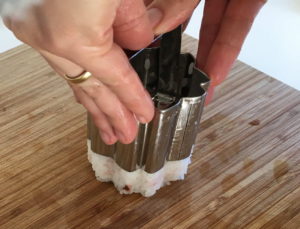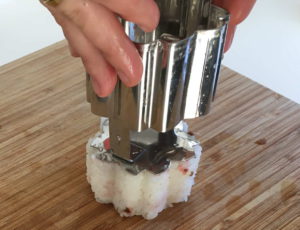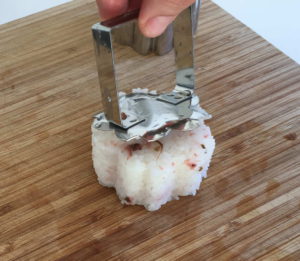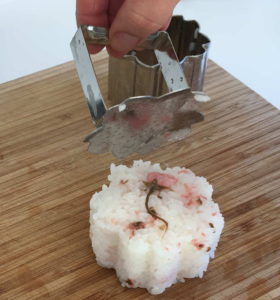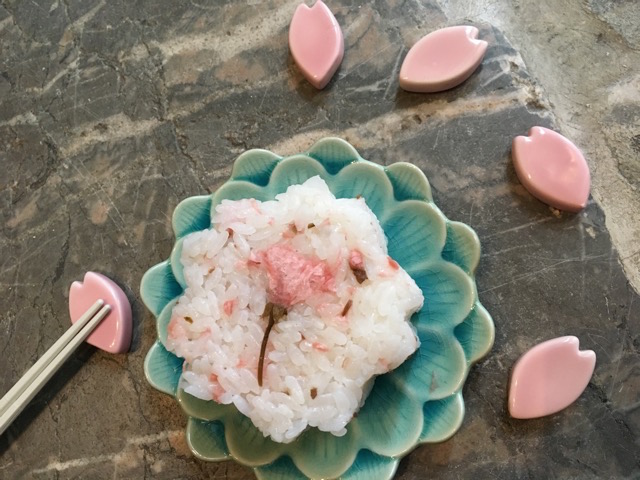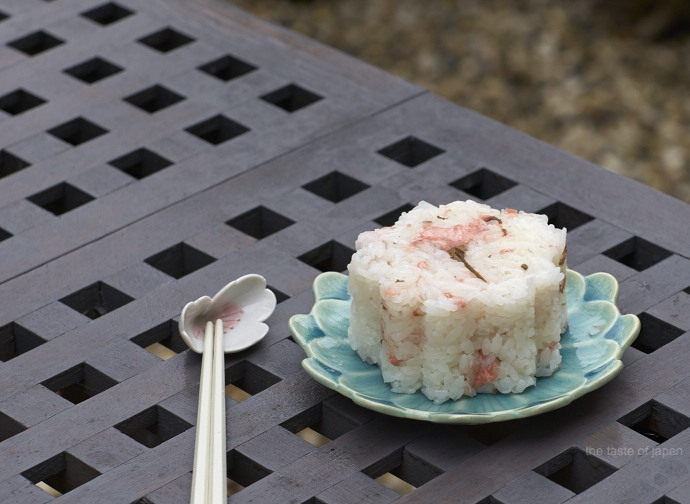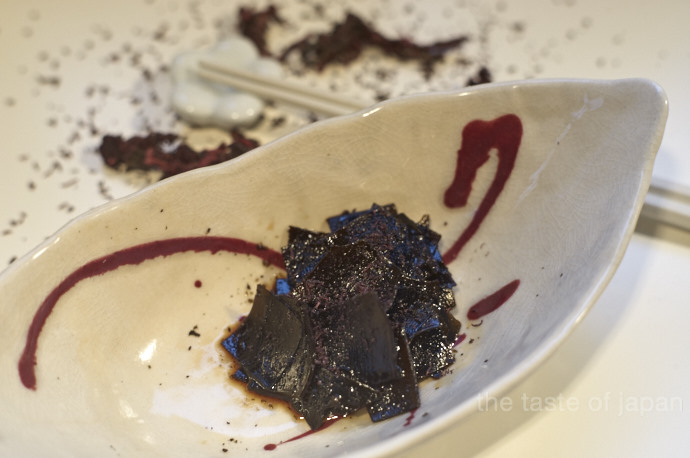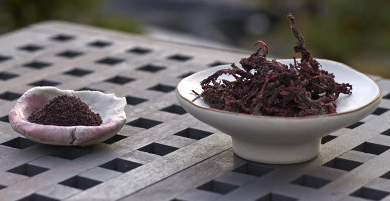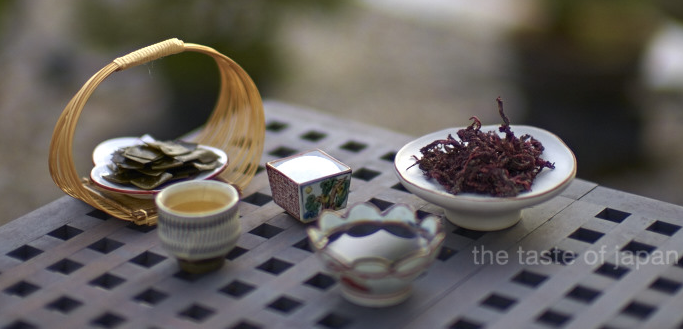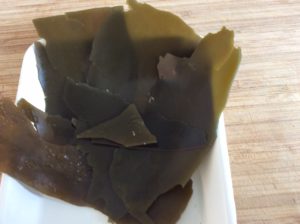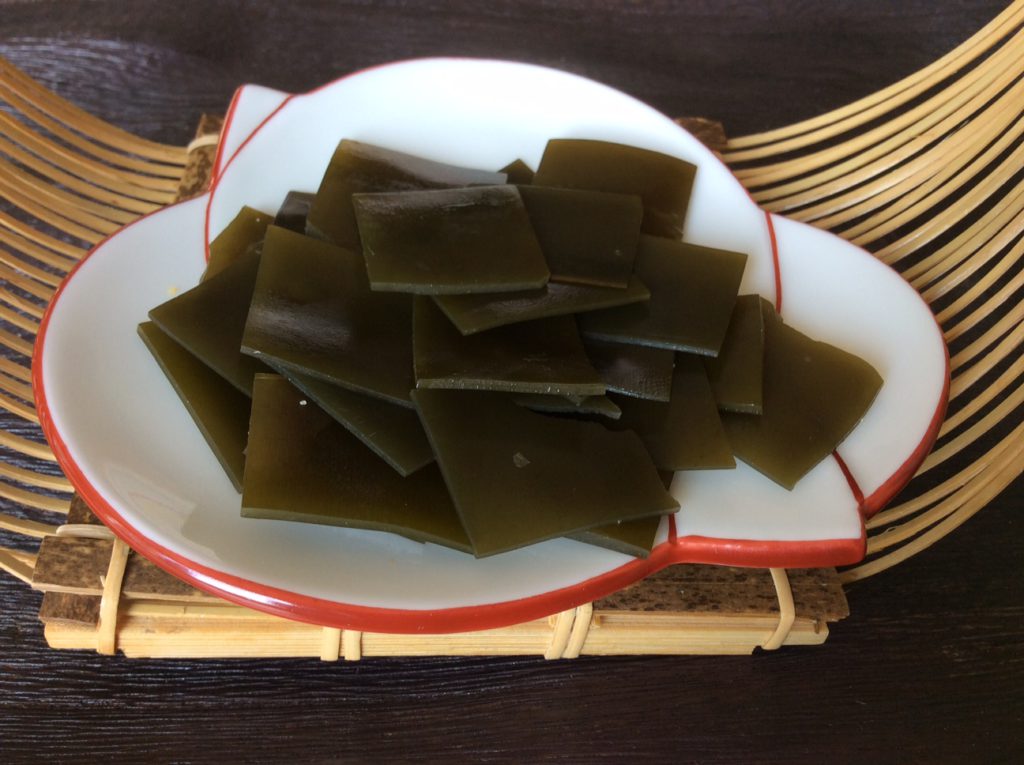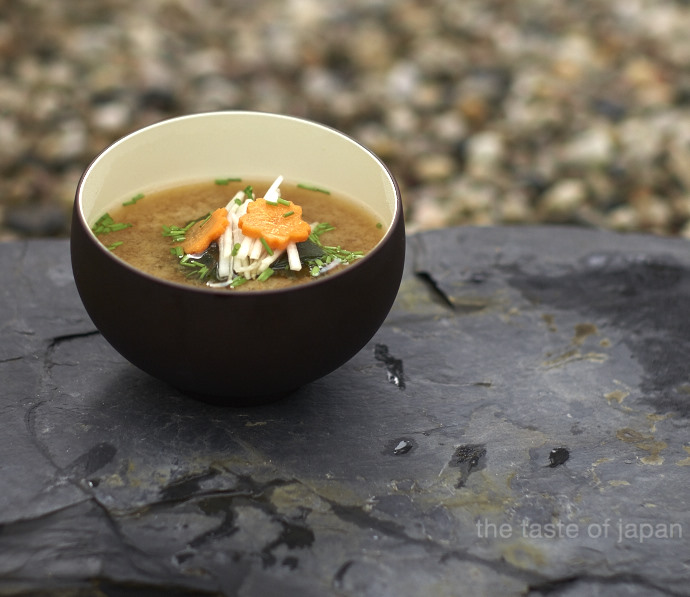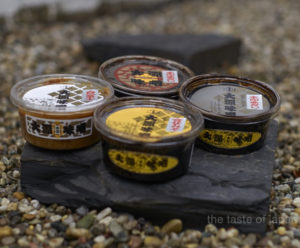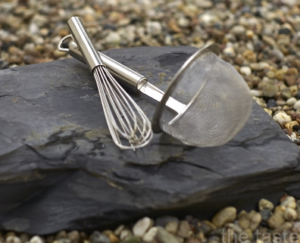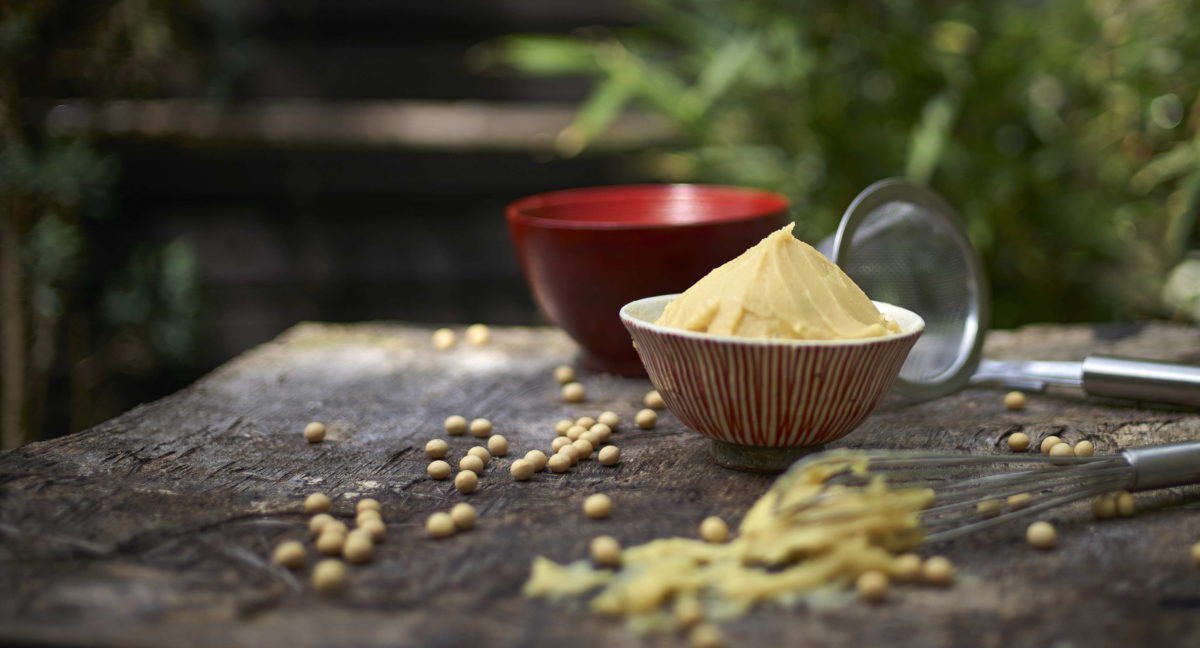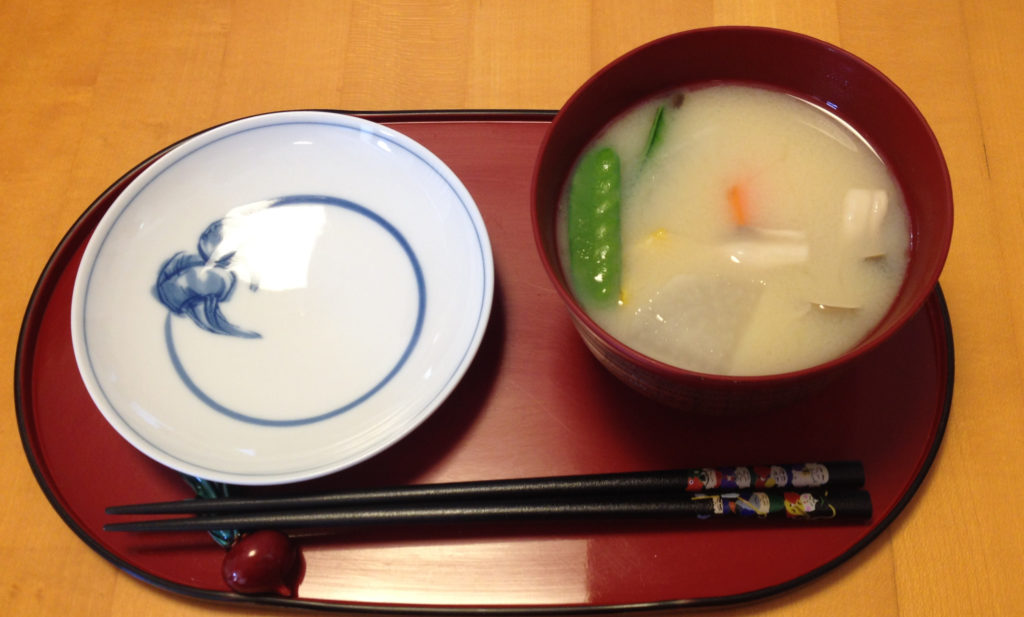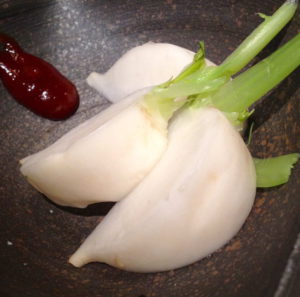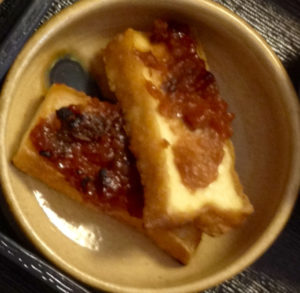Breathtaking beautiful, but only for a short moment. Cherry-blossoms are known for its short but brilliant blooming season, a natural process that not only symbolizes the start of spring but also metaphorically describes transience of human life. Two weeks until the delicate pink and white petals return to earth like snowflakes in the wind.
Last year I wrote about the Japanese custom to serve cherry blossom tea at weddings. Every time I remember that custom I am filled with the grace of Japanese politeness, which you can glean here.
A different and very common culinary use for salted cherry blossoms is sakura gohan (rice mixed with salted cherry blossoms). Wonderful to take with you for a Hanami picnic, but equally wonderful to be served at home for dinner. For tonight I decided to double the cherry blossom experience and shape our sakura gohan into a cherry blossom itself.
The cherry blossom mold equals one portion of rice which is about ½ a Japanese cup (100ml) of uncooked rice. Due to the salt the rice keeps well at room temperature, so you can easily make the sakura gohan cherry blossoms ahead of time and keep it covered at room temperature until the rest of the food is ready to eat.
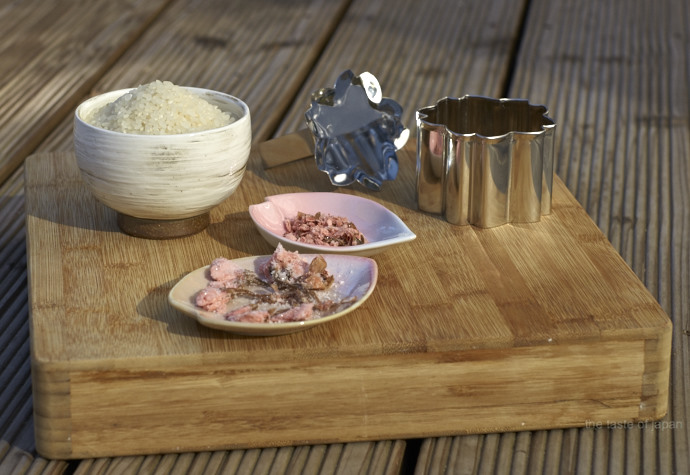
- ½ 200ml-cup Japanese rice
- 120 ml Water
- 1 Tbsp. Chopped, salted cherry blossoms
- 1 salted cherry blossom for decoration (optional)
Method for making cherry blossom rice
Wash the rice well, cook it in a rice cooker or on the stove and leave it to steam with the lid closed for another 15 to 20 minutes after it is done cooking.
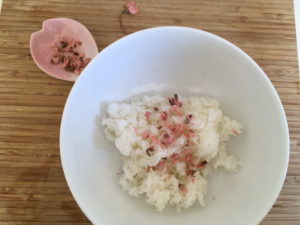
Shake off some of the salt from the cherry blossoms and chop them finely. Keep the salt for another use (remember mottainai – nothing goes to waste in the Japanese kitchen). The salt from the cherry blossoms has a wonderful scent and tastes delicious as a finishing salt on grilled fish.
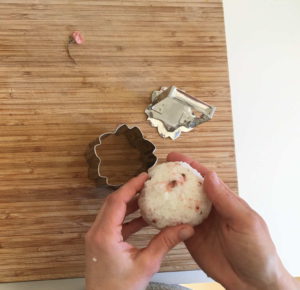
After the rice is done steaming you should fluff it up and sprinkle the chopped cherry blossoms on top. Now you carefully work the cherry blossoms in the rice, ideally using a shamoji (a plastic or wooden spoon for rice). Make sure to use cutting and folding motions to avoid the rice to become mush. That’s it. Serve your sakura gohan directly in rice bowls or shape them to your liking into onigiris, logs or cherry blossoms.
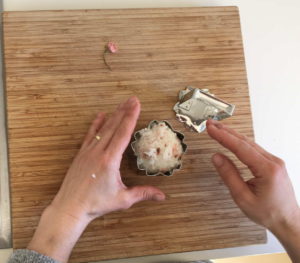
Introducing onigiri in more detail has long been on the editorial schedule for this blog. So if you are interested to read about the different kinds of onigiri, how to make them and some of the fillings, I invite you to subscribe to the newsletter.
In order to make sakura gohan in the shape of a cherry blossom you need to have a cherry blossom mold.
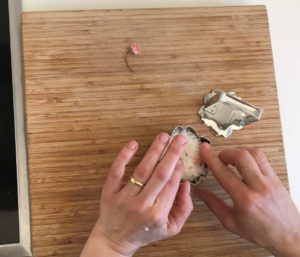
Make sure that both – your hands as well as the mold are wet, otherwise the rice will stick to both and shaping it neatly will not be possible. Gently form a ball with the rice in your hands and drop it into the mold. Use your fingertips to help the rice into the corners, put on the lid and apply gentle pressure.
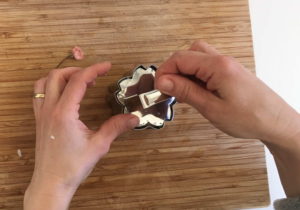
Lift the lid and double check that the rice fills the entire mold. Decorate the top with a single cherry blossom if you like and give the rice a final, gentle press with the lid. To release the rice from the mold hold the lid down with your thumbs while your fingers lift the mold up. Now wiggle off the lid to make sure not to ruin the shape and serve your sakura gohan-cherry blossom.
See the pictures below for more details on the process:

